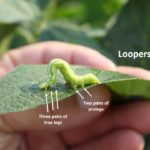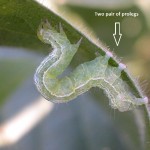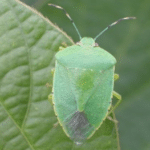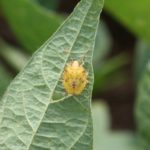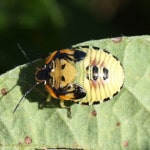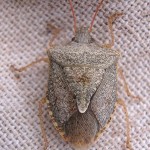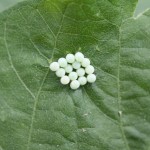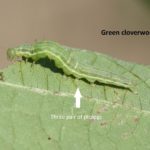As corn harvest begins and we start finishing off the cotton crop, it’s hard to find time to keep up the good fight on soybean insect management. But make no mistake that late August through September is the most critical time to scout and manage insects in late maturing soybean! Although there is still some potential for corn earworm infestations in the latest soybean, from this point forward, stink bugs and soybean loopers will be the most likely pests to cause significant yield loss. I’ve included a photo gallery as a reminder of what these critters look like, but don’t forget the content at https://guide.utcrops.com/soybean/soybean-insect-guide/.
So when can you relax? Keep a vigilant eye on fields until at least R6 (full seed within the top four nodes of the plant). Soybean will remain susceptible to some insect pests for about 10 days after reaching R6, but they are getting progressively less susceptible from this point forward. Thus, we recommend doubling the stink bug threshold at R6 from 9/25 sweeps to 18/25 sweeps (except perhaps for seed bean). This is important because stink bug populations often build quickly after R6. However, most seed are “full”, so stink bugs would only have a large impact on seed quality (not yield). Similarly, relax the defoliation threshold at R6 from 20% to 30% for 10 days, after which, you should not treat for defoliating insects. Heck, the field will typically be turning color and naturally defoliating by R7 (when an average plant has a a brown, mature pod). How important can insect defoliation be if the plant is already defoliating itself?
Pro Tip … don’t quote me on this (OK, you can). If I visit a field at R6 with very little sign of insect infestations, then I “cut it loose”. In other words, if there is nothing close to a treatment threshold, it would have to get really bad really fast to justify an insecticide treatment in the next 7-10 days. Even then, the risk of substantial yield loss is very low. The flip side of this is that late maturing soybean fields are often “on the edge” of having a threshold of insect pests at R6.

